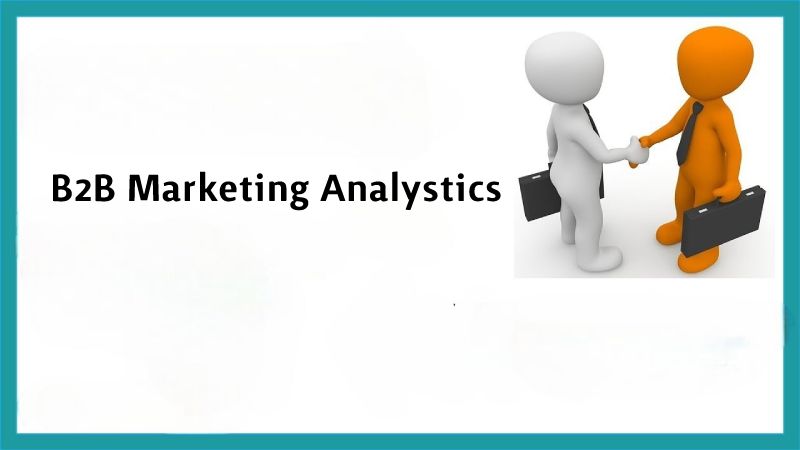How To Get Started As A B2B Marketing Analystics & 3 Crucial Considerations

How To Get Started As A B2B Marketing Analystics & 3 Crucial Considerations
B2B, or business-to-business, is an acronym. Such a corporation sells goods and services to other businesses. B2B happens when a business needs raw materials for production or operational support. In a B2B context, purchasing choices are not determined by a single person. People from many departments and functions typically make up the decision-making group. As a result, agreeing requires more time.In the long run, companies desire to collaborate with other companies. Brand loyalty is, therefore, more crucial in a B2B setting. Because B2B partnerships have a big impact on procedures, operating systems, and costs, businesses cherish them. Attitudes regarding targeted advertising have drastically changed since the introduction of the first electronic trading platforms up until the present. B2B marketing Analystics has completely changed during the past ten years.
Table of Contents
What do B2B marketing analytics entail?
You may analyse, track, and constantly update your marketing strategy to boost ROI with the aid of B2B marketing analytics. Because of customizable dashboards, B2B marketing analytics is now a single source of truth for seeing metrics, sharing insights with internal teams, and making data-driven decisions.
The procedure might be difficult because a company’s marketing structure has so many moving parts. A person passes through a number of stages before becoming a consumer as well.
Every consumer must be tracked by analytics from the time they become leads until the moment they convert. Then and only then will you be able to assess which components of your marketing structure are working and whether any holes need to be filled. To grasp the purpose of B2B marketing analytics fast, see it as a funnel:
Before a lead enters the funnel, an analytics dashboard has already decided which data to track. Depending on how you configure your analytics, you can monitor everything from the length of time it takes for a lead to become a MQL (marketing qualified lead) to the percentage of MQLs that convert into SQLs (sales qualified leads).
As an illustration, if you want to keep track of how active your email list is, you could set up a dashboard to track click-through rates, openings, and unique clicks:
You can assess whether email marketing is effective with your audience after you have enough data. If a campaign has few unique clicks or has low open rates, you should make modifications. Each B2B marketing analytics setup requires the following three components:
Datasets:
where source data is collected, leveraged to make datasets you can use in dashboards, and then examined
The filters through which you’ll see and assess each dataset
Dashboards:
curated charts that you may view from various angles. Based on metrics, statistics, and facts, you can change them.
As a result of the absence of an integrated marketing strategy, the results of these actions are typically neither measurable nor rewarding. These factors are ones that you as a B2B marketing analyst should take into account.
1. Keep your customer in mind
Only consumers who fit particular market segmentation criteria are targeted by effective B2B marketing, including finances, the number of employees, the region or city where they work and function, the brands they manufacture, and several other characteristics. As a result, marketing initiatives get a lot of attention, generate more consumers, and boost lifetime value and customer satisfaction.
B2B platforms give users access to highly high-quality material, a company registration, and detailed information about specific businesses, including their financial and credit conditions, management contacts, and more. Additionally, with this information, you may select the ideal target market for your product or service.
2. Research Directions
Observe market trends and follow the top blogs. Always use technology to your advantage to generate B2B leads. To advance, it’s essential to adapt to market demands and rivalry.
In the modern world, generating leads is getting more and more crucial. If you don’t, someone else will work hard for your (possible) consumers. It would help if you were current with events in your sector to be a successful B2B marketing analyst.
Customised advertising to business partners is a great example of targeted marketing on business-to-business platforms, where only business entities interact.
3. Keep up with new technology
If you do not keep up with new technologies as they develop quickly, your B2B lead generation analysis will be unsuccessful. Look at the big data management and programmatic marketing markets and the ones for tailored email delivery.
The consumer experience will be improved, and more leads will be generated. The personalisation and automation of email marketing campaigns have long been made easy with the help of MailChimp and other email marketing providers.
Check whether a customised and automated email campaign welcomes the subscriber or prompts them to do the desired action.
Conclusion
These days, businesses need more information on their client’s demands, challenges, and desires. In actuality, many companies still know far too little about their clients.
They rely on the sales person’s expertise in the industry to swiftly complete a deal, even though doing so requires investing far more money in just one new client. You, as a B2B marketing analyst, may help here.
Also read: Importance Of Supply Chain Optimization You Need To Know




